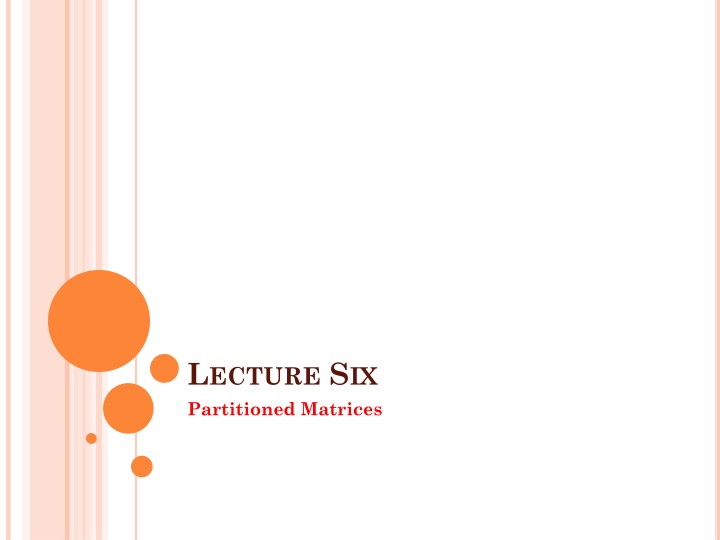
Partitioned Matrices for Effective Matrix Operations
Explore the concept of partitioned matrices in linear algebra, covering their use in matrix addition, multiplication, determinant computation, and inverse calculation. Learn how proper partitioning enhances matrix operations and optimizations.
Download Presentation

Please find below an Image/Link to download the presentation.
The content on the website is provided AS IS for your information and personal use only. It may not be sold, licensed, or shared on other websites without obtaining consent from the author. If you encounter any issues during the download, it is possible that the publisher has removed the file from their server.
You are allowed to download the files provided on this website for personal or commercial use, subject to the condition that they are used lawfully. All files are the property of their respective owners.
The content on the website is provided AS IS for your information and personal use only. It may not be sold, licensed, or shared on other websites without obtaining consent from the author.
E N D
Presentation Transcript
LECTURE SIX Partitioned Matrices
Let we can write Matrix A as partitioned matrices as follows: where the matrices Aijconsist riof rows and cjof columns, in order that all partitioned matrices at a certain row of matrix A have to contain the same number of rows. Also, all partitioned matrices at a certain column of matrix A have to contain the same number of columns. The Sum of Partitioned Matrices If we have two matrices A & B , which are partitioned in such a way that sub-matrices have similar dimensions
The Product of Partitioned Matrices If we have two matrices A & B , which are partitioned in such a way that sub-matrices dimensions. Then, the main goal is how to partition two matrices A & B adequately to get proper multiplication. have convenient
Determinant of Partitioned Matrices Suppose we partition the matrix (A) as follows: where A11& A22are both square and non-singular. It is necessary to compute If (A11) is non-singular , then:
Inverse of Partitioned Matrices Suppose we partition the matrix (A) as follows: where A11& A22are both square and non-singular, then the elements of the inverse are given by: where:





















